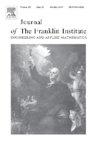MRAC for H∞ tracking of TUAV based on improved AED-ADT method
IF 4.2
3区 计算机科学
Q2 AUTOMATION & CONTROL SYSTEMS
Journal of The Franklin Institute-engineering and Applied Mathematics
Pub Date : 2025-09-20
DOI:10.1016/j.jfranklin.2025.108081
引用次数: 0
Abstract
This paper addresses the transition mode tracking control problem of the tilt-rotor UAV(TUAV). And a new adaptive robust control approach is proposed, leveraging the improved admissible edge-dependent average dwell time(AED-ADT) framework, which integrates the model reference adaptive control(MRAC) method with control technique. The TUAV’s variable structure and strong coupling result in complex aerodynamic behavior and modeling uncertainties. To resolve the aforementioned issues, an improved AED-ADT method is proposed for the first time. This method significantly relaxes the constraints on the Lyapunov functions for any two subsystems, providing a more flexible framework for the design of variable-structure aircraft control systems. Benefiting from the flexible framework, a modified MRAC is integrated to address substantial modeling uncertainties, featuring a more flexible adaptive law design. In addition, the robust control is introduced and combined with the improved MRAC and AED-ADT methods, which further improves the robustness of the controlled system against external disturbances. Ultimately, the simulation results presented validate the effectiveness of the proposed method.
基于改进AED-ADT方法的多目标飞行器H∞跟踪
研究了倾转旋翼无人机(TUAV)的过渡模式跟踪控制问题。利用改进的允许边缘相关平均停留时间(AED-ADT)框架,将模型参考自适应控制(MRAC)方法与H∞控制技术相结合,提出了一种新的自适应鲁棒控制方法。TUAV的变结构和强耦合导致其复杂的气动性能和建模不确定性。针对上述问题,首次提出了一种改进的AED-ADT方法。该方法显著地放宽了对任意两个子系统的Lyapunov函数的约束,为变结构飞机控制系统的设计提供了更灵活的框架。得益于灵活的框架,改进的MRAC集成解决了大量的建模不确定性,具有更灵活的自适应律设计。此外,引入了鲁棒H∞控制,并与改进的MRAC和AED-ADT方法相结合,进一步提高了被控系统对外部干扰的鲁棒性。最后,仿真结果验证了该方法的有效性。
本文章由计算机程序翻译,如有差异,请以英文原文为准。
求助全文
约1分钟内获得全文
求助全文
来源期刊
CiteScore
7.30
自引率
14.60%
发文量
586
审稿时长
6.9 months
期刊介绍:
The Journal of The Franklin Institute has an established reputation for publishing high-quality papers in the field of engineering and applied mathematics. Its current focus is on control systems, complex networks and dynamic systems, signal processing and communications and their applications. All submitted papers are peer-reviewed. The Journal will publish original research papers and research review papers of substance. Papers and special focus issues are judged upon possible lasting value, which has been and continues to be the strength of the Journal of The Franklin Institute.

 求助内容:
求助内容: 应助结果提醒方式:
应助结果提醒方式:


